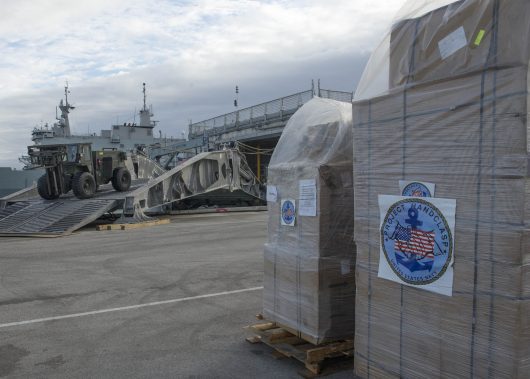Improving the Transparency of U.S. Foreign Aid with Open Data

ForeignAssistance.gov was launched to increase the transparency of U.S. foreign aid programs. A massive data gap, if left unaddressed, may undermine the site’s raison d’être.
In 2011, the Open Government Partnership (OGP) was forged to institutionalize a multilateral means of promoting governmental transparency and citizen engagement. OGP seeks to translate bureaucratic goodwill into actionable commitments, which ideally come to fruition through processes made public to the citizenry.
Since its inception, the initiative has amassed an impressive headcount of 70 countries and cycled through numerous National Action Plans, or two-year commitment itineraries designed to keep participants in line.
The Obama administration released its third Open Government Plan a year ago. Framed as a matter of fiscal transparency, the question of foreign aid manifested in a renewed vow to “raise awareness, increase accessibility and build demand for foreign assistance data.”
A similar pledge was made in the Obama administration’s first Open Government Plan, which commissioned, in conjunction with the Paris Declaration on Aid Effectiveness, the creation of ForeignAssistance.gov.
The website collates, reports and visualizes the foreign assistance data of qualifying federal agencies. Easy on the eyes appearance-wise and optimized for public consumption navigation-wise, ForeignAssistance.gov comes across as a user-friendly heuristic and win for transparency of U.S. foreign aid.
A recent evaluative probe conducted by the General Accountability Office (GAO) in September, however, revealed that not all is well beneath the website’s sleek, shiny interface.
By comparing ForeignAssistance.gov data with that of USAID, the GAO report found that over $10 billion in disbursements made by participating agencies went unreported on the website in 2014. Around $6 billion in obligations was also missing, and the regular updates promised in OGP blueprints had long subsided.
Even though all agencies contributing to the ForeignAssistance.gov data bank are required to measure up to the same standard of detail, not all tracking systems are created equal. When surveyed prior to the GAO investigation, the agencies confirmed that limitations on access and technology prevented them from ensuring quality control.
Because the website fails to make such limitations explicitly known, odds are that the stakeholders and other consumers who took the data to be accurate and up-to-date were, in fact, crunching misleading numbers.
With all signs pointing toward misinformation — a notion that goes against the very essence of the OGP mission — the White House had to act fast to stem the damage. As a result, ForeignAssistance.gov was included in a series of U.S. Open Government initiatives rolled out weeks after the GAO let its watchdogs loose.
In an interesting move, the initiatives, which are part of the third U.S. Open Government Plan, conjoined transparency in foreign assistance with security sector assistance.
The Department of Defense (DoD) was implicated in a plan to increase the accountability of U.S. defense institutions, because of which it must now up the number and quality of its data contributions to ForeignAssistance.gov.
Although the commitment signals the White House’s acknowledgment of the website’s deficiencies, it falls short of GAO recommendations, which have been seconded by USAID, OMB and the Department of State.
Living up to them requires more cooperation with USAID and the Office of Management and Budget (OMB), as well as a visible pronouncement of limitation disclosures on the website.
Following through accordingly would be as much an act of public service and as a fulfillment of OGP transparency principles. U.S. foreign aid beneficiaries and other stakeholders can benefit greatly from comprehensive reportage on foreign assistance spending — but only if they are made fully aware of the data’s strengths and weaknesses.
– Jo Gurch
Photo: Flickr
